
10 wildflowers to spot in spring
Colourful wildflowers carpeting the Forest floor are one of the most uplifting sights in spring. Often shrouded in folklore and always beneficial for wildlife, they certainly brighten up springtime woodland walks.
Volunteer Janice shares her top 10 flowers to look out for on Heart of England Forest visits this season.
Dog violet
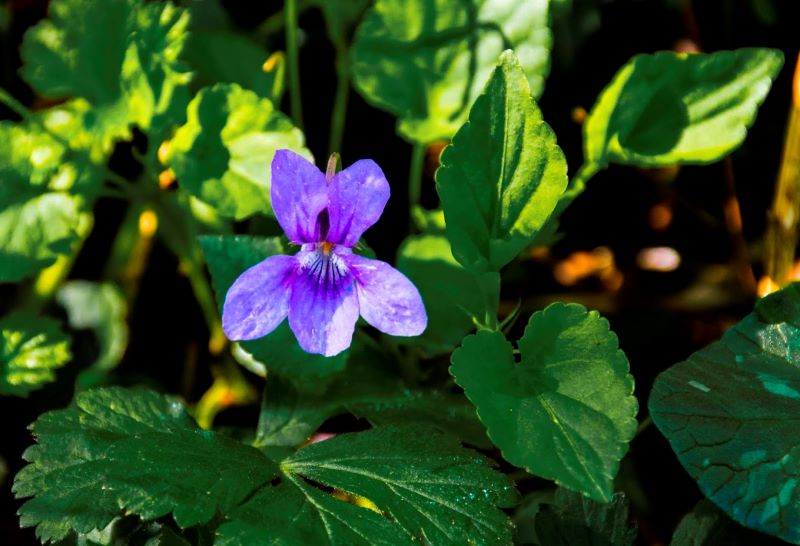
Loved by rare butterflies like the silver washed fritillary and the Ancient Greeks who believed they was a sign of fertility and romance, dog violets can be found in a range of habitats in the Forest from woodland to grassland. Also called wood violet, their unscented purple flowers, with heart-shaped leaves, appear from April to June.
Bluebell
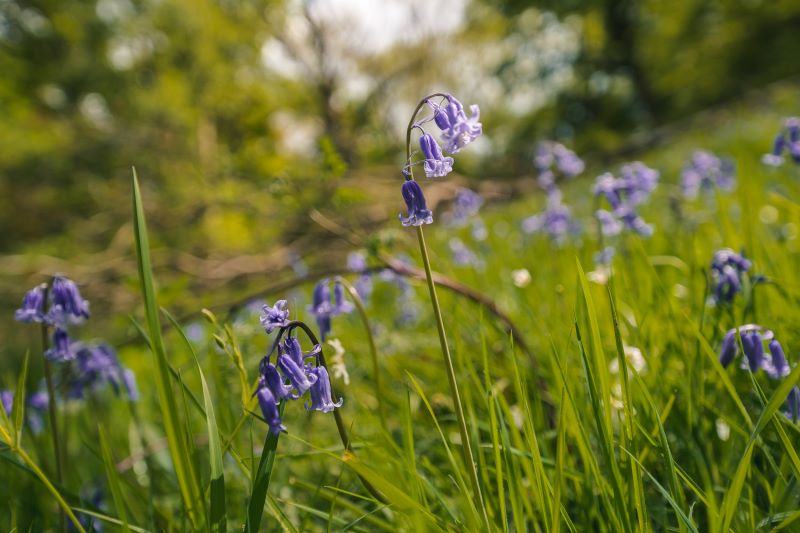
A vibrant blanket of bluebells stretching across a woodland floor is one of the great sights of spring. Flowering in mid-April to late May (dependent on weather conditions), bluebells make the most of the sunlight that reaches the woodland floor before the full forest canopy casts its shade.
This beautiful wildflower thrives in broadleaf woodlands and their existence can indicate an ancient woodland. The definition of an ancient woodland is one that has existed continuously since at least 1600 AD.
Victorian times saw the introduction of the Spanish bluebell as a garden plant. Having been planted in the wild it now crossbreeds with the native bluebell, so the latter has now been designated as a protected species. In fact, it is a criminal offence to uproot a wild English bluebell from land on which it naturally grows. Read more about bluebells in the Forest.
Wild Garlic
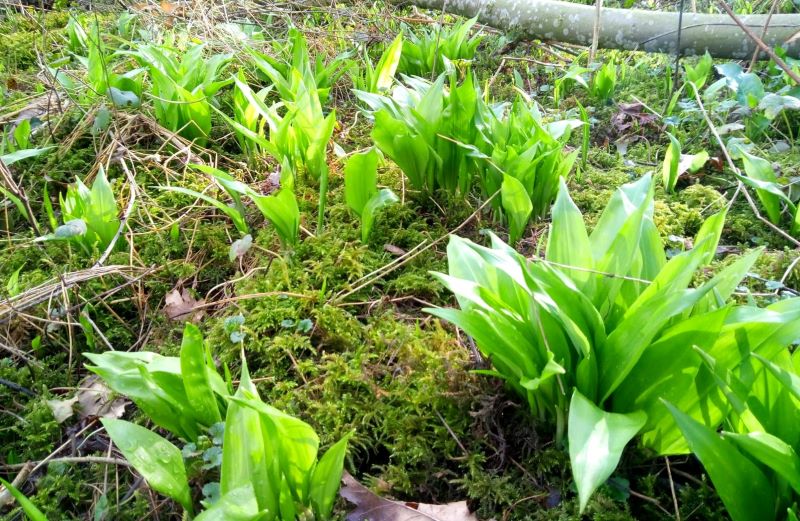
The distinctive scent of wild garlic fills areas of the Forest from April. Long, pointed, and oval-shaped leaves grow from the bulb at the plant base in March, and their white flowers form rounded clusters at the top of leafless stalks from April to June.
Wild garlic is an ancient-woodland-indicator plant, so if you see it when out walking it is a sign you are in very special woodland. As well as being an early source of nectar for bees and other pollinators, it is also popular with foragers and can be eaten raw or cooked.
Cowslip
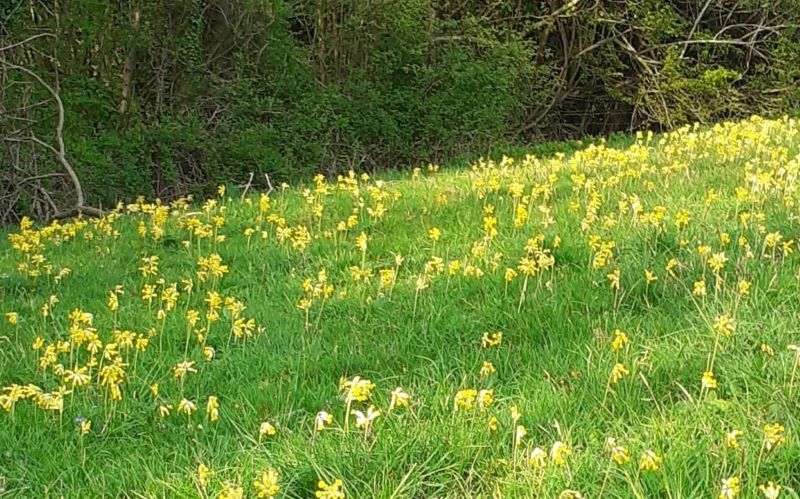
In May you might see pretty yellow cowslips in the meadow habitat in the Forest that have spread by side stems called rhizomes. The whole area becomes covered with flowers if there is not over grazing and these areas are great places for butterfly spotting.
The name means cow pat, so you might find them in a slippery field! Cowslips prefer calcareous soil and are closely related to the primrose, but the flowers are more tube like and hang downwards. In the past the flowers were made into a tea, and the dried rhizome was used as a medicine for bronchitis. Too much is poisonous though!
Red campion
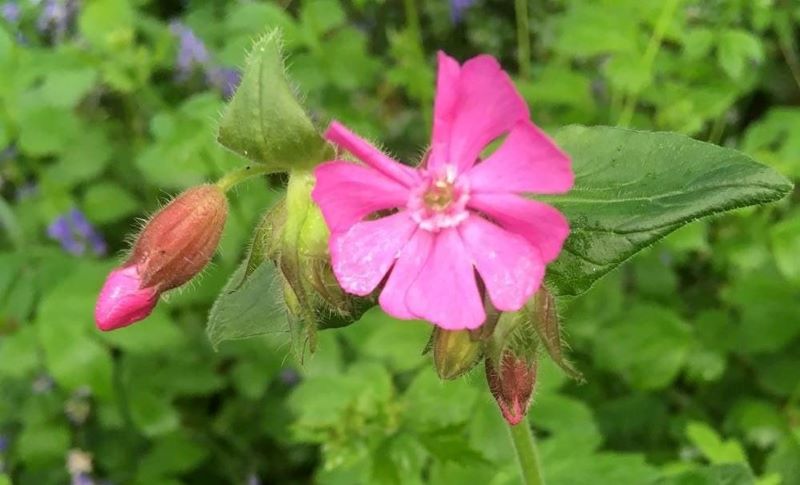
Red campion flowers open in May, adding a splash of red-pink colour to the hedgerows and shaded areas of woodland. They are dioecious, so the male and female flowers are found on separate plants. Inside the female flower is a large ovary with 5 styles, and in the male are 10 stamens.
The campion family contains a large range of fragrant and decorative plants such as carnations, pinks, and gypsophila, and several weeds such as chickweed. All the plants usually have 5 petals, often notched, 5 sepals joined in a tube and simple leaves in opposite pairs.
Yellow iris
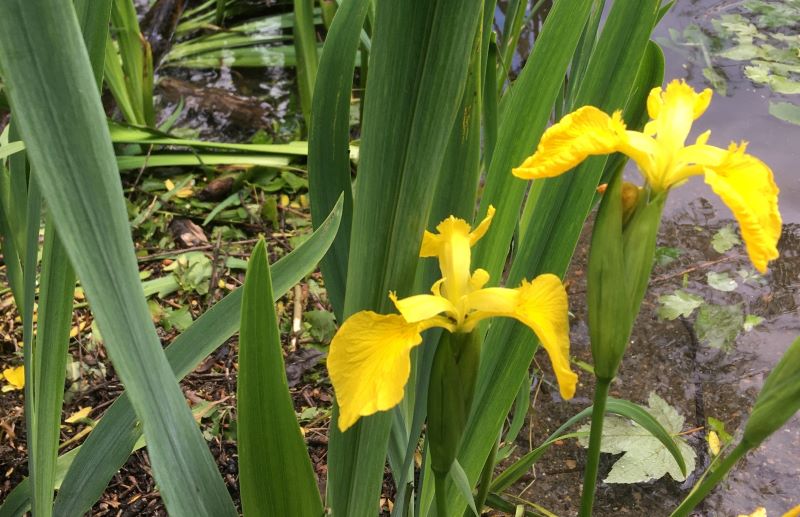
Yellow irises like lots of water so grow rapidly using side stems called rhizomes on the margins of any water source. Look out for these around the ponds in the Forest. Their large yellow flowers may have inspired heraldic fleur-de-lis and the Scout symbol.
The powdered root was used medicinally to help the body get rid of excess water, and an extract from some iris species called orris oil or butter is used in some perfumes and in making gin flavours.
Hawthorn
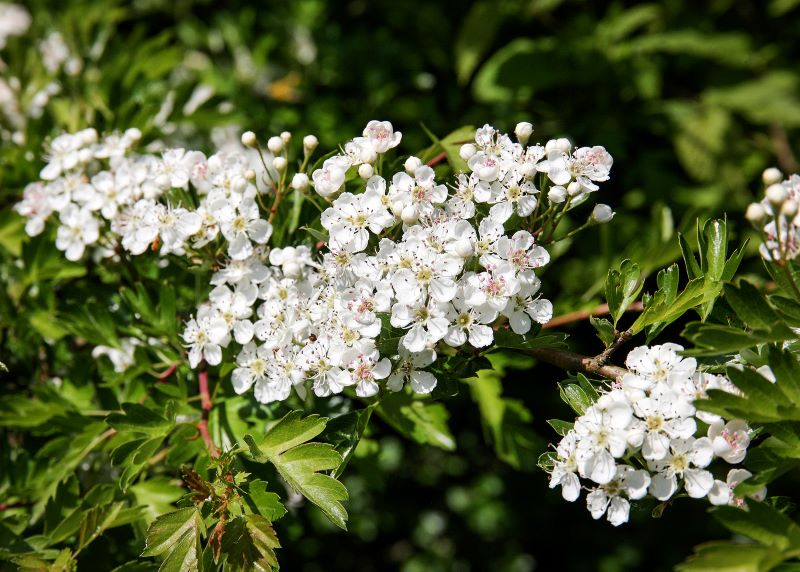
Hawthorn is also known as the May tree as this is the month in which it flowers, adding swathes of cherry-like white and pale pink flowers to the hedgerows in the Forest.
Hawthorn is a member of the rose family, known as a symbol of fertility, and as fairy trees that you do not cut down. They can support up to 300 species of insects which feed on their leaves, blossom, and single seeded red fruit (haws) in the autumn.
Ragged robin
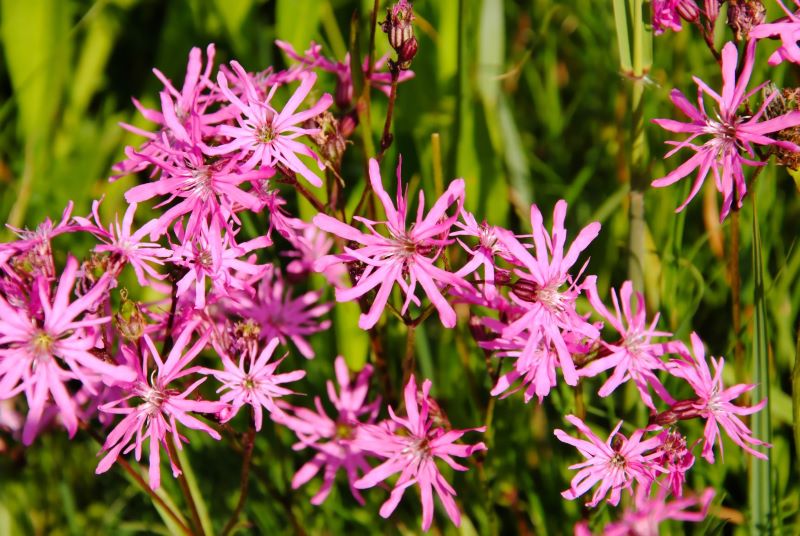
Found in wildflower meadows, damp pastures and woodland rides, ragged robin has frayed looking pink flowers (hence the name) and narrow, grass-like leaves. Bumblebees and butterflies enjoy the nectar it produces, and it is particularly attractive to long-tongued bees.
In Shakespeare’s Hamlet, crow-flowers are found in Ophelia’s garland, which are thought to be ragged robin. Each flower in the garland had a particular symbolism, with crow-flowers known for brightness and innocence.
St John’s wort
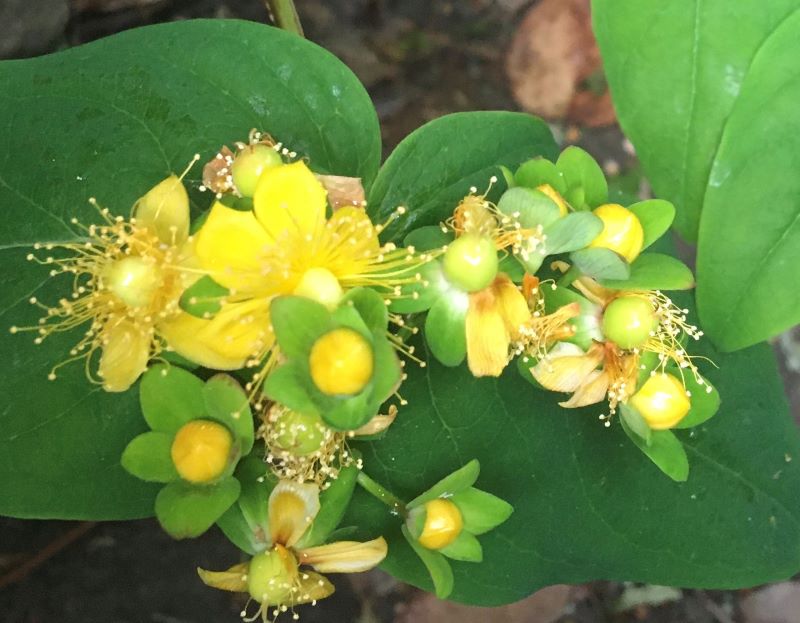
St John’s wort is found in open woods and has yellow flowers around the time of the summer solstice and the feast of St John the Baptist (24th June), hence its name. It has been used since Roman times as a magic potion and in more recent times for depression.
Perforate St John’s wort has oil glands on the leaves that look like little holes when held up to the light. There are at least 15 other similar species including tutsan (pictured), which has more obvious flowers and red stems.
Bramble
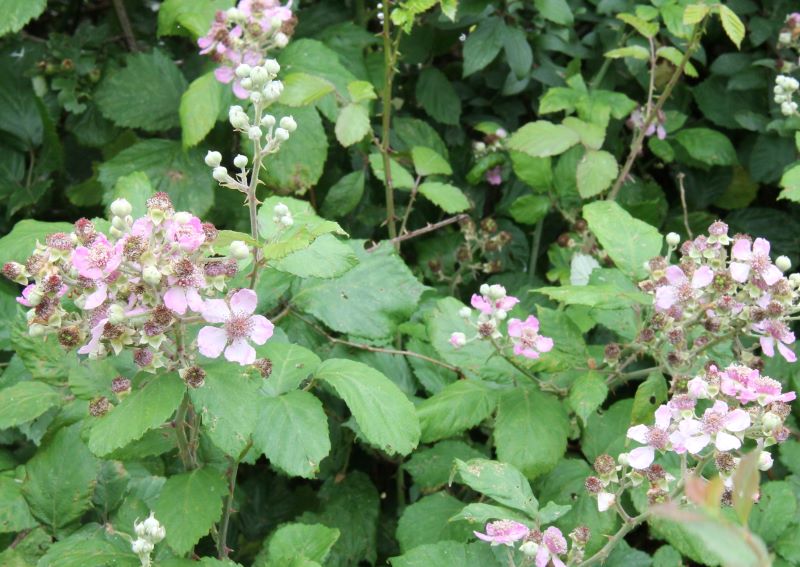
Do not think of bramble as a weed, admire its survival skills and its rate of growth! Bramble has many uses – food for caterpillars, a nectar source for butterflies and bees, ingredients for blackberry and apple crumble, bramble jelly, medicines, blue dye and split canes for baskets and bee skeps. You can use the thorny plants to protect other crops too – the trouble is they tend to take over and their thorns do hurt!
They are members of the rose family as you can see from the flowers, which grow on the fast-growing shoots in their second year. The plant has medicinal properties; leaf or stronger root tea cures thrush and mouth ulcers, and the fruits are a good source of vitamin C and are good in a smoothie. They are not really a berry as each tiny blob is a fruit, so the whole thing is called an aggregate fruit.
Wildflowers and native pollinators
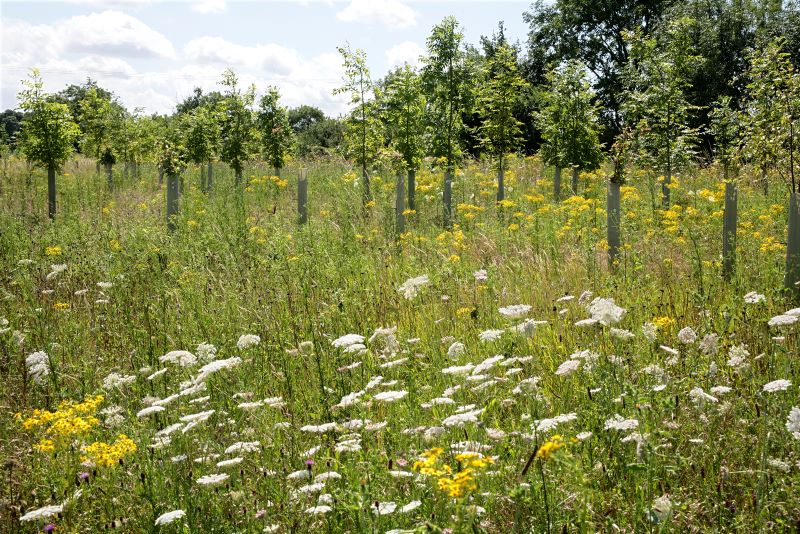
It is a sad fact that many of our pollinators are in decline. During the summer months our grasslands are full of important insects, and we plan to do more for our native pollinators by enhancing the floristic diversity of the woodland rides and glades over the coming years. You can help, too, by planting wildflowers in your garden, creating a haven for bees and butterflies.
Find out about the wildflowers that provide a supply of pollen and nectar throughout the year in the grasslands in the Forest.



